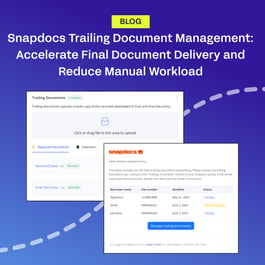The mortgage industry is undergoing a long-awaited digital transformation, spurred by the need to maximize profitability and productivity. While hybrid closings offer considerable benefits for originators, digitizing the promissory note (eNote) not only saves $290+ per loan, but dramatically increases efficiency, enhances security, and reduces risk. To achieve these eNote benefits, lenders require a critical piece of eNote technology: an eVault.
eVault technology plays a critical role in a mortgage participant’s ability to drive eNote adoption and make these projected cost savings a reality. To better understand why digitization of the note is such a game changer, let’s delve into what eNotes and eVaults are, the processes that are involved, and the benefits lenders can reap by using this technology.
For a deep dive into the eNote process, read the Mechanics of eNotes white paper.
What is an eVault?
An eVault is the platform used to securely generate, execute, store, manage, and transfer copies of eNotes and other digital mortgage documents. The eVault validates that the eNote has not been tampered with, provides a comprehensive audit trail of all events, and distinguishes between the authoritative and non-authoritative copies of eNotes.
Here's how it works:
- The eNote is generated by the eVault
- Borrower(s) electronically signs the eNote
- The eVault applies tamper seal to the eNote
- The eNote is registered on the MERS® eRegistry
- A copy of the eNote is sent to trading counterparties via MERS® eDelivery
- Once accepted, rightsholder positions and authoritative copy designations are updated accordingly
Note: Steps 5 & 6 would not apply to an eNote that is kept in a lender’s portfolio.
Designing the Snapdocs eVault
Snapdocs uncovered a number of consistent pain points that prevented originators from achieving eNote at scale. The Snapdocs eVault was intentionally designed to address these core challenges, including:
- Lack of eNote integrity and interoperability that render eNotes invalid or cause them to be converted to paper notes
- Highly limited data and reporting capabilities that leave employees to cobble together reports and complete manual, stare-and-compare analyses to reconcile data
- Lack of system reliability that causes eVaults to go down for hours without warning
- Limited transparency and security that impact the successful transfer of the eNote
Snapdocs then partnered closely with loan originators and secondary market participants to build the Snapdocs eVault that is:
- Easy to use: An intuitive user interface that takes the guesswork out of the status of the eNote, or any additional actions required in the eVault
- Interoperable: GSE-approved and fully integrated with the MERS eRegistry® and MERS eDelivery for seamless, automated, and compliant eNote transactions
- Hyper-reliable: Robust security features including best-in-class encryption, verification of digital tamper-evident seals, audit logs, and third-party testing to ensure integrity and enforceability
Today, the Snapdocs eVault is successfully helping lenders achieve their eNote goals at scale. To learn more about the success lenders have experienced with the Snapdocs eVault, watch the recent National Mortgage News webinar featuring PRMI, Fannie Mae, and Snapdocs.





















